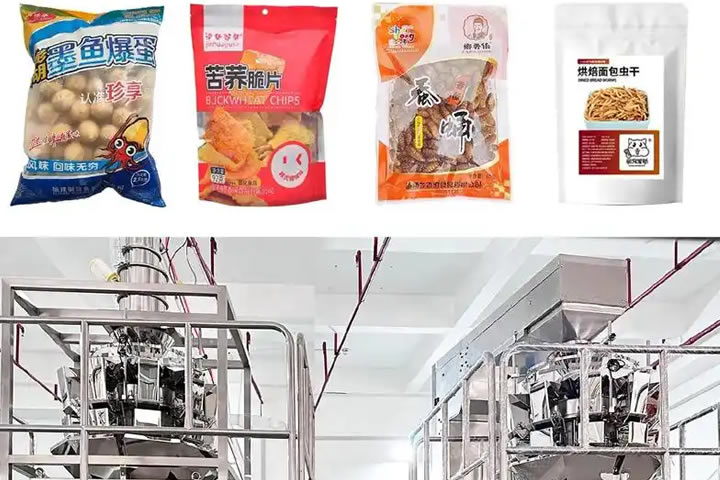"This machine is more efficient than hiring ten workers!" Mr. Chen of a food company patted the control panel of the fully automatic packaging machine, and his laughter shook the dust on the ceiling of the workshop. When he brought his team to inspect three years ago, there were still cartons tied with hemp ropes in the workshop, and the wrinkles of the sealing tape were stained with biscuit crumbs.

As the inheritor of the provincial intangible cultural heritage peanut crisps, Mr. Chen always believes that "handmade temperature" is the soul of food. Until before the Spring Festival, he received an expedited order from a chain supermarket-requiring 72 hours to deliver 20,000 boxes of New Year gift boxes, with nitrogen filling and fresh-keeping and traceability QR codes. "Working overnight? The workers have already gone home for the holiday!" Xiao Wang from the technical department suggested: "Why don't we try the food packaging machine from last year's exhibition?"
On the day the equipment arrived, the old masters circled around the silver-gray machine body: "Can this iron lump understand our old formula?" The result was unexpected: through the 3D visual recognition system, the machine accurately identified the weight error of biscuits of different specifications and automatically adjusted the nitrogen filling amount. What's more surprising is that the packing process that originally required 4 people to collaborate can now be monitored by 1 person.
After a revisit half a year later, the workshop has become a transparent digital factory. Real-time data is jumping on the monitoring screen: the packaging yield rate has jumped from 82% to 97.6%, and the equipment OEE (overall efficiency) is stable at more than 85%. The most intuitive change is the delivery cycle - from order receipt to delivery, the fastest compression is 48 hours.
"Customers now specifically ask for goods from 'that smart production line.'" Warehouse supervisor Lao Zhou pointed to the special mark on the delivery note, "They have calculated that the shelf life of biscuits packaged with our machine can be extended by 20 days."
Recently, Mr. Chen asked us to customize new equipment again - this time to overcome the problem of "special-shaped packaging". "Young people like Chinese style, we have to make the shortbread into the shape of a cultural relic bookmark." He took out the design drawing, and the "±0.1mm accuracy requirement" was marked next to the biscuit pre-forming mold.
On the latest flexible production line, the robotic arm of the food packaging machine is arranging the freshly baked Phoenix shortbread into the "intangible cultural heritage totem" pattern. Mr. Chen's daughter showed in the Douyin live broadcast: "Each shortbread has an ID card, and you can also scan the QR code to see the production story."
When the setting sun shines through the floor-to-ceiling window onto the brand new stainless steel operating table, Mr. Chen seals the last package of samples into a gift box. The moment the metal buckle "clicked" closed, he suddenly remembered the wooden mold passed down by his grandfather - those old objects with the residual warmth of palm prints are now dancing with modern robotic arms, playing an upgrading rhapsody for small and medium-sized enterprises in the rhythm of food packaging machines.

